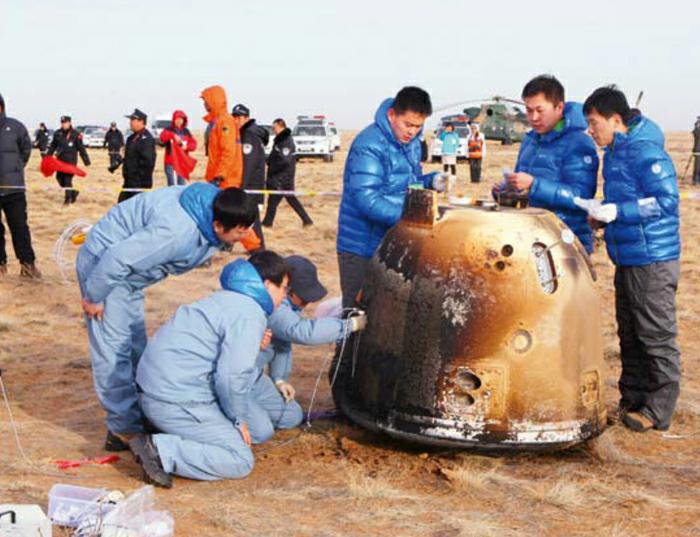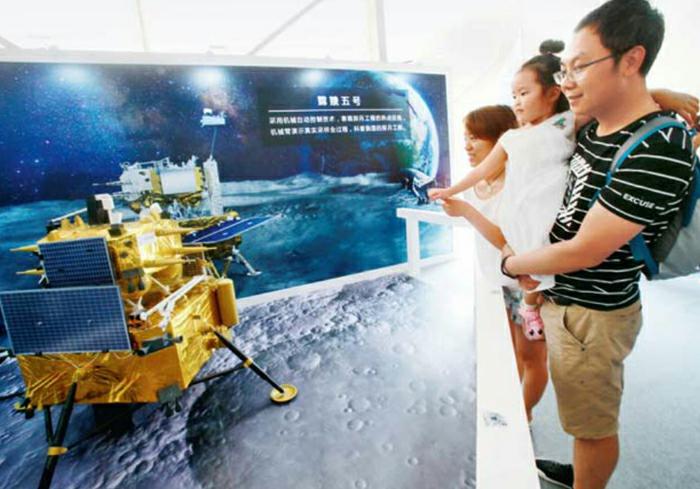Moon Missions
2017-09-06byHuZhoumeng
by+Hu+Zhoumeng
The moon has maintained a central role in Chinese culture since ancient times. Not only has it inspired numerous poets, but also generated timeless myths and legends, the most famous of which is about a beauty named Change who resides on the moon with a jade rabbit and her husband Houyi, who shot down nine of ten suns.
Far from ancient imagination, world scientists have been pouring resources into solving mysteries of the ball of rock 239,000 miles from Earth, hoping to gain a deeper understanding of the only natural satellite of Earth and devise ways to exploit it. Chinese experts have played a big role with a mission named after Change.
Closer Touch
China launched two lunar orbiters, Change-1 in 2007 and Change-2 in 2010. With the Change-3 mission in 2013, China became the third country, after the former Soviet Union and the United States, to soft land on the surface of the moon. Later this year, the heavy-lift carrier rocket Long March-5 is supposed to take the Change-5 lunar probe to space from the Wenchang Space Launch Center on southern Chinas Hainan Island. Liftoff will herald the dawn of the third phase of Chinas lunar program: Return after orbiting and landing.
The Change-5 probe, designed by the Chinese Academy of Space Technology, is Chinas first unmanned spacecraft designed to perform lunar sampling. It will make China the third country to bring lunar samples to Earth and the first in over four decades since the former Soviet Unions Luna-24 mission in 1976. The Change-5 mission could be tremendously significant for science and serve as a valuable test for future manned lunar missions.
The return of the Change-5 probe requires delicate coordination between four systems that comprise the eight-ton vehicle: an orbiter, a returner, an ascender and a lander. The lander will put moon samples in a vessel in the ascender after the moon landing. Then the ascender will take off from the moon, dock with the orbiter and then transfer samples to the return module. The orbiter and returner will then head back to Earth. Finally, the returner will re-enter the atmosphere.
The mission will mark several firsts in Chinas lunar program upon completion: first automated moon surface sampling, first moon take-off, first unmanned docking in lunar orbit about 380,000 kilometers from Earth and first return flight at a speed near second cosmic velocity, notes China Aerospace Science and Technology Corporation (CASC).
China also plans to launch the Change-4 lunar probe around 2018 to achieve mankinds first soft landing on the dark side of the moon and conduct roving detection and relay communications at Earth-moon L2 point, according to the China National Space Administration.
Mining Treasure
Chinese lunar knowledge can be traced back to the days when farmers changed their activities according to the moons phases to improve agricultural harvests.
Over centuries, abundant scientific work helpful to humankind has been achieved thanks to lunar exploration. Decades ago, the United States made an early move with NASAs US$25.4-billion Apollo program that produced multiple new technologies for aerospace, military, material and communication sciences.
As the Change missions have been implemented, China has generated new knowledge with updated full-moon images and geological and 3D topographic maps. Its research on lunar soil and spatial environment also produced fascinating results.
These days, a lunar probe is expected to offer solutions for humans to battle climate change and explore new energy. “The moons surface is a rich pool of Helium-3, a good source of clean energy that could meet the worlds energy demands for generations,” remarked Ouyang Ziyuan, chief scientist of Chinas lunar probe program. “Lunar probes could help solve energy problems, and it is the shared responsibility of the worlds scientific community to work towards that end.”
“International cooperation always enhances the capabilities of both agencies, which is again the case for our long-term cooperation with China in the area of tracking and operations,” said Paolo Ferri, head of the Mission Operations Department at the European Space Operations Centre. The European Space Agency offered support to the Change missions. Further cooperation between China and European countries including German, France, Sweden and the Netherlands is in the works.